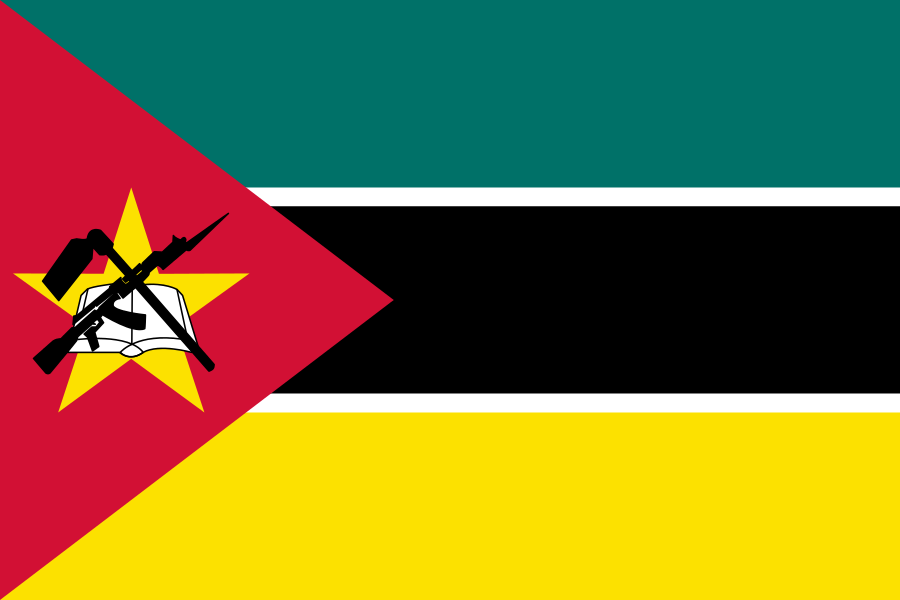let's delve even deeper into the intricate symbolism and historical context behind each element of the Mozambique flag:
Green Stripe (Top): The lush green stripe at the top of the flag holds several layers of symbolism:
- Agriculture and Natural Resources: The green represents the fertile land of Mozambique, which is well-suited for agriculture and is rich in natural resources such as timber, minerals, and fertile soil. It reflects the importance of agriculture to the country's economy and livelihood.
- Hope and Growth: The green color also signifies hope, growth, and the promise of a prosperous future for the Mozambican people. It embodies the country's aspirations for development, stability, and sustainability.
Black Stripe (Middle): The black stripe carries profound historical and cultural meanings:
- African Identity: Black represents the African continent, highlighting Mozambique's place within Africa and its connection to the broader African heritage. It symbolizes solidarity with other African nations and underscores Mozambique's history as part of the larger African narrative.
- Colonial Resistance and Liberation: Black also serves as a reminder of Mozambique's struggle for independence from Portuguese colonial rule. It represents the sacrifices made by the Mozambican people during their fight for self-determination, freedom, and the right to govern themselves.
Yellow Stripe (Bottom): The vibrant yellow stripe brings forth a range of interpretations:
- Mineral Wealth: Yellow signifies the mineral wealth found within Mozambique's soil, particularly gold. This color recognizes the country's significant mineral resources, which play a vital role in its economy and development.
- Sunshine and Optimism: The bright yellow also symbolizes the abundant sunshine that graces Mozambique throughout the year. It embodies optimism, positivity, and the idea of a bright and hopeful future for the nation.
White Fimbriation (Border): The white border adds an additional layer of significance to the flag:
- Unity and Peace: The white fimbriation serves as a barrier between the green and black stripes, ensuring they do not blend. This separation signifies the peaceful coexistence of Mozambique's diverse ethnic and cultural groups. It represents the unity that the nation strives to maintain and uphold, even amidst its diverse population.
- Harmony and Reconciliation: White is often associated with purity, harmony, and reconciliation. It embodies the aspiration for peaceful relations among Mozambique's various communities, as well as the ongoing efforts to heal from past conflicts and divisions.
In essence, the Mozambique flag is a powerful embodiment of the nation's history, struggles, aspirations, and unity. Its combination of vibrant colors and meaningful symbolism encapsulates Mozambique's journey from colonialism to independence, its rich natural resources, its commitment to African identity, and its hopes for a prosperous and harmonious future.
Last Updated on: August 08, 2023